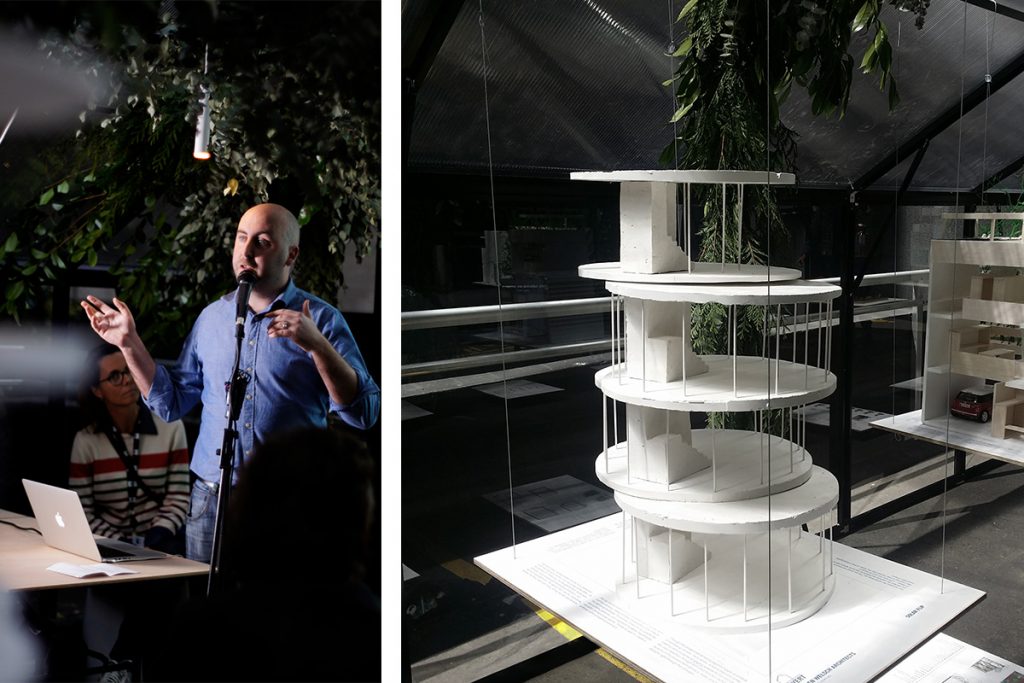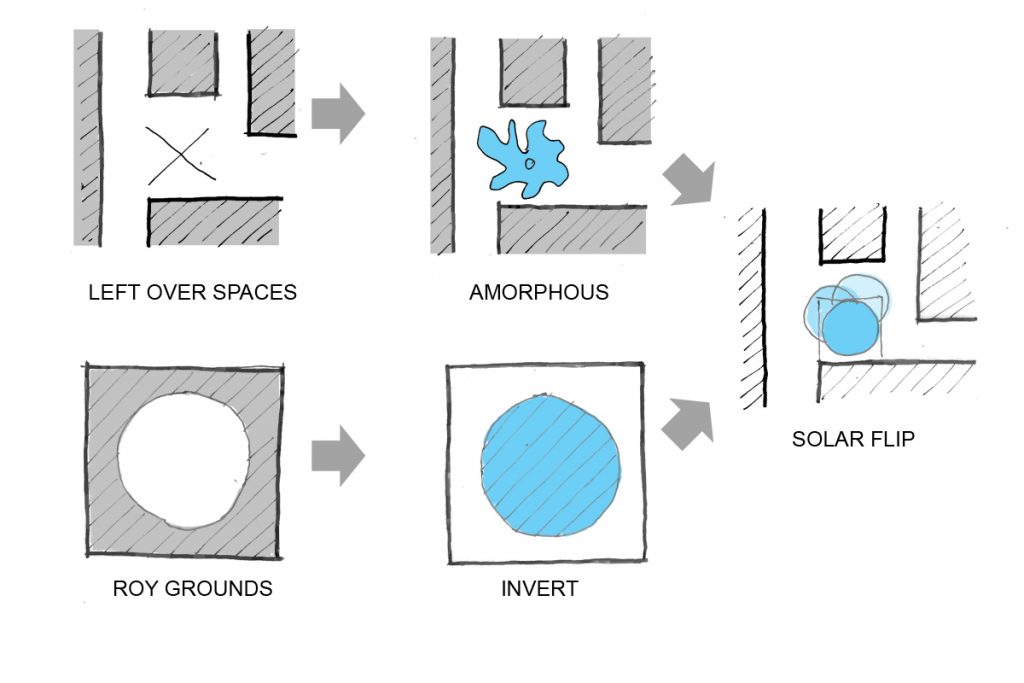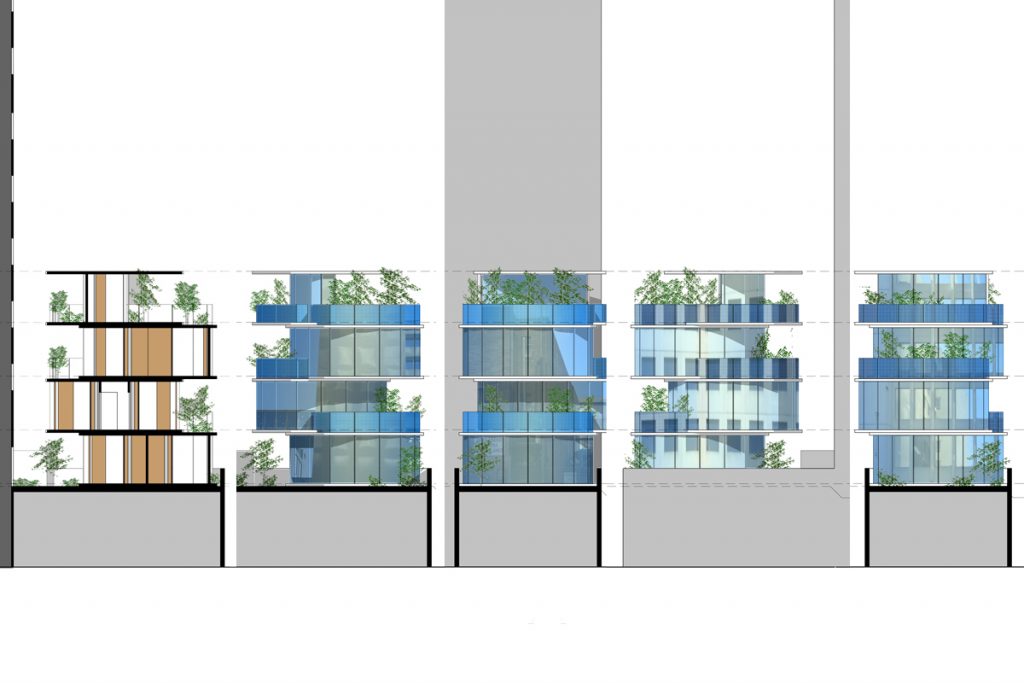A green oasis for Melbourne’s CBD
This project was designed for Green Magazine’s Invert exhibition held in October, 2017, in conjunction with MINI (the cars) and the City of Melbourne. Invert invited a cohort of architects to creates designs and models that response to the brief. Through a series of public architect-led talks onsite in a piece of land buried at the foot of skyscrapers – the project site – the exhibition brought to life different creative solutions for small-scale inner city living.
Involvement with Invert was a no-brainer. This is the third practice-led project we have developed in the last three years (‘9 star apartments’ won an Architeam commendation, 2015; ‘Save our Suburbs’ was a finalist in 2016).
We are trying to embed taking time out to investigate and express positive change-making core values and ideas (without the constraints of real briefs) into the practice. We hope this will keep our thinking challenged, our people inspired, and our projects progressing.
Our solution for small was up. Dense urban environments are perfect for vertical architecture because space above is limitless – until you run out of oxygen! We inserted a tree house into the base of this inhospitable concrete chasm. With reflective glazed grid windows and sheer concrete tower walls, these leftover, captivating yet forgotten spaces in our cities are difficult to resolve and therefore left spatially disarranged.
Our scheme investigates how to behave in this context. Inspired by Roy Grounds’ courtyard house – inverting his excision of a circle from a square – our treehouse counteracts the void these spaces create. It attempts to make place where unbidden, to create habit from the uninhabitable. We experimented with the circle as the most space-efficient geometry.
A circle generates 80% less perimeter wall over a comparable square or rectilinear shape of the same floor area. To this we overlaid a replicable template. Where we can replicate we can reproduce to keep costs down and save resources.
Through the one modular panel different constructs – glass, solid, solar, shade, aperture, greenery – create variety within predetermined highly space-efficient parameters. We stack these modular prefab cylinder floor plates and shift them around a central core one on top of the other – to four storeys for Treehouse. For the ground floor, landscape mediates public-private with the entrance threshold, first bedroom and bathroom.
The second floor has two bedrooms, terrace; the third, open plan living, dining, kitchen and terrace. The top floor is multifunctional (entertaining of course) with roof-top decking. Glass provides transparency and reflects the adjoining buildings.
To provide privacy to occupants we use curtains, greenery, and vegetation screens: balustrades are solid, perhaps solar panels. Timber is used to create a softness within a harsh environment. Through this project we aimed to explore bigger questions of increasing density, replicability, small is beautiful while creating self-contained engaging spaces to live and prosper.
We used repetition through form and function tackling all aspects of the environment (privacy, noise, practicality, sun, daylight) right through the concept.


